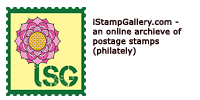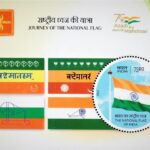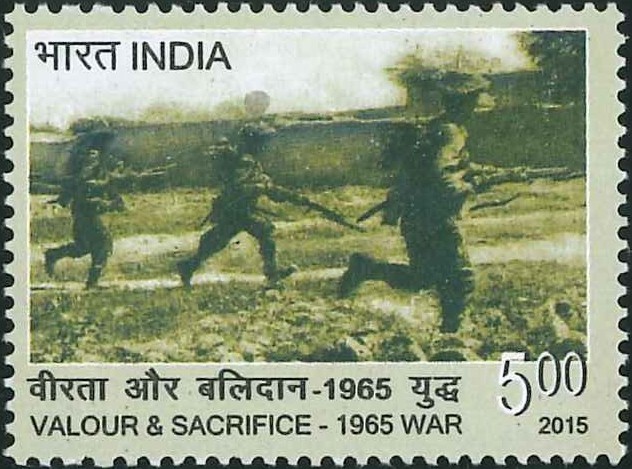
Yishuv Volunteers to British Forces in World War II
A commemorative postage stamp on the Palestinian–Jewish Volunteers to the British Forces in World War II :
 Issued by Israel
Issued by Israel
Issued on 13 Feb, 1979
The Designer : Asher Oron was born in 1939, in Poland. He immigrated to Israel in 1947 and later studied Graphic Design at the London College of Printing.
His current work covers many areas of graphic design with the emphasis on integrated design and its application to the fields of information, publicity and marketing campaigns for public institutions and industry.
He has designed a set of Hebrew type (known as “Oron”), several books, packaging units, posters and symbols.
In 1968 he was appointed a lecturer in the Department of Graphic Design at the Bezalel Academy of Art in Jerusalem and in 1976 was promoted Associate Professor. He has represented Bezalel at various international conferences devoted to graphic art and typography and methods of teaching them. He is also a member of the educational committee of the International Typographical Union.
His articles have appeared in various international journals and professional publications in Europe, the USA and Japan.
Type : Stamp, Mint Condition
Colour : Multi colour
Denomination : 5.10 Pound
About :
- Thirty thousand men and women of the “Yishuv” – the Jewish community in Eretz Israel – volunteered for service in the British Forces during World War II carrying with them in their hearts the dream of the rebirth of the Jewish nation in its own home-land. What led them to volunteer was not only the long history of Jewish bravery that was to stand them in good stead during the War of Independence, but the urge to appear as an organized Jewish Force, to rescue the survivors of the Holocaust and to settle accounts with the murderers of the Jewish people. These 30,000 fighters constituted the only army in the world that did not have to be conscripted to fight the Nazi war machine but who had all volunteered out of a deep feeling of identification with world Jewry.
- These Jewish volunteers had four goals:
- To fight as human beings against the Nazi Foe,
- To fight as Jews,
- To bring about the rescue of the remnants of the Holocaust, restore their self-respect and bring them safely to the Jewish homeland,
- To form the nucleus of a regular Jewish army.
- The volunteers served in the British army, navy and air force and took part in all the theatres of war – Syria and Lebanon; Iraq and Persia; Egypt; Libya; Tripoli and Tunis; Ethiopia and Eritrea; Greece and Crete; Cyprus; Rhodes; France; Italy; Holland and Belgium. They even found their way to India, Burma, Singapore and Australia. 800 fell in the campaigns in Libya, Greece, Italy and the Mediterranean, sacrificing their lives fighting the Nazis in the name of human liberty.
- A million and a half Jews served in the Allied Armies in World War II, but all its citizens of their countries of birth – they were considered as Englishmen, Americans, Frenchmen, Russians, etc., although they carried in their hearts the feeling of belonging to the Jewish people. It was only the Palestinian Jews who carried on the fight against the Nazis as Jews and in the name of Jewry. It was only after a protracted and determined fight that they were granted recognition as a Jewish military force and were granted the right to fight under their own flag – the blue and white flag with the Star of David – to take an active part in the fight against the Nazi enemy. The Jewish Brigade moved to the Italian front line to face crack units of the Nazi army. These battles of the Jewish Brigade marked the highlight of the Palestinian-Jewish volunteers in their contribution, as Jews, to the allied war effort. Their national identity was displayed for all to see when they took part in the Victory Parade in London, marching proudly behind their own national flag. It also found expression in Churchill’s acknowledgement, on V-Day, when he proudly listed the contingents that had taken an active part in routing the Nazi enemy, including “the Jewish Brigade which fought courageously in the forefront of battle”.
- The volunteers were widely scattered over three continents – Asia, Africa and Europe – a fact which helped them to make contact with their persecuted brethren in the conquered territories, organize them, educate them, encourage them and kindle in their hearts the hope of delivery and a belief that the day of salvation was near. When the day of victory finally arrived, the volunteers acted as a kind of magnet to the wretched survivors of the death camps. They sought them out, aided and comforted them, gave them back their self-respect and conducted them safely past hostile borders to the shelter of their own homeland. The flag of the fighting Jewish Brigade which had flown so proudly in Italy became the banner of the illegal immigrants. At the first Congress of Jewish Refugees held in Italy, they expressed their “deep appreciation to the volunteers from the Yishuv who had brought honour to the Jewish people by volunteering to take part in the fight against Hitler; for the assistance rendered to their brethren from the devastated areas in helping them flee to the safety of their own homeland” and expressed their yearning for the day when they would fight, “side by side, for the restoration of our land and the revival of our people” (May 1945). And the day came when their hope was realised – the People of Israel’s War of Independence.
- The volunteers’ mission was not completed, however, with the shedding of their British army uniforms. All that they had learned in the military schools about the organization, training and operation of a fighting army, and the vast experience they had accumulated in the different branches of the armed forces – infantry, navy, air force, transport, medicine, engineers, artillery, armour, supplies, communications and the women’s auxiliary corps – in the different theatres of war, all this formed the solid foundations on which Israel’s own army (ZAHAL) was later founded.







